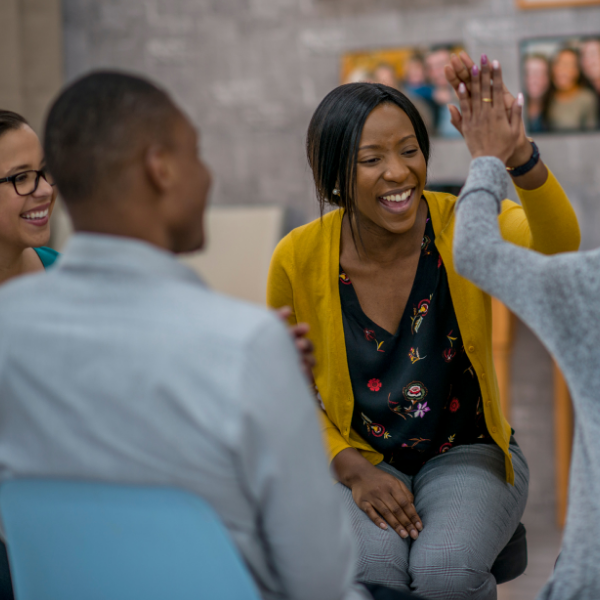The Learning Accelerator Blog/Big Ideas from Hop, Skip, Leapfrog: Supporting and Celebrating Educators as They Innovate in LAUSD
Big Ideas from Hop, Skip, Leapfrog: Supporting and Celebrating Educators as They Innovate in LAUSD
by Dr. John Garcia III, Kristina Romero on August 16 2021

Dr. John Garcia III is the President of the Greater Los Angeles Education Foundation (GLA), and Kristina Romero is the organization’s Manager of Special Projects. The Greater LA Education Foundation is the philanthropic, knowledge, and action arm of the Los Angeles County Office of Education, and the organization seeks to advance a deeper collaboration between schools and communities to disrupt inequity and meet the needs of today’s diverse learners across Los Angeles County.
As part of our Hop, Skip, Leapfrog interviews with subject-matter experts across the K-12 field, we asked them to weigh in on education policy opportunities in a post-pandemic world. Read on for three big ideas from our conversation, in John and Kristina’s words.
Takeaway #1: Teachers were able to leverage the flexibility of distance learning to innovate and personalize instruction.
“At the onset of the pandemic, teachers and districts became aware of the opportunity to be flexible in a way that had not been possible before. There was an array of digital tools and learning platforms that were suddenly available for educators to adopt. The key task was identifying which tools and platforms would meet the needs of the students and teachers best. Some districts left it up to the educators to use the platform that was best for them and their students. Other districts wanted to make sure that it was uniform across the district, so they decided to use one particular platform that included specific functionality. Regardless, digital tools helped educators personalize their instruction for students.
In the midst of the pandemic, GLA launched an initiative to invest in dynamic teacher leaders, develop new strategies to help students, and share best practices with other educators. Teachers have unique [insights] into the needs of their students, and GLA believes teacher-led solutions will be paramount in the region’s recovery. As part of the initiative, GLA sponsored 30 teacher-led projects that ranged from intimate interventions for [students with special needs] to centralized training for district departments.
One teacher provided personalized reading plans for students that were based on their interests and reading level, offering a list of new digital books that students could read. Another teacher created BoomCards, digital and interactive activities, as part of an online learning platform that provided instant feedback to students. Others used digital phonics programs for [students in special education programs] and [students learning English.]
One last interesting example we’d like to uplift is from a teacher who applied for funding to purchase video camera equipment. The teacher requested funding for the equipment so that he [could] record and edit his lessons and deliver them in a creative way, similar to how students are consuming on social media, and make them available for students to refer back to when needed.”
Takeaway #2: Community partnerships were critical to supporting students holistically.
“In response to the immense challenges students faced during the pandemic, one great thing that we saw was the number of new partnerships between schools, community-based organizations, and institutions of higher education, [designed] to provide basic needs and social-emotional support for students. Some schools partnered with community organizations to provide basic support like transportation services to families. Others partnered with local higher education institutions to provide more intense types of support for students – like group counseling, case management, and substance abuse prevention.
One specific example of a community-based partnership we learned about was between a K-12 district and a refugee resettlement nonprofit organization. The district and the nonprofit organization partnered together to pair high school students, who are native English speakers, with elementary English learners to provide them with tutoring and mentoring support.
We recently convened a group of community schools from across Los Angeles County to learn from and collaborate with ... and we noticed how such schools already had the infrastructure to be able to quickly respond to the needs of their students and families, by partnering with neighboring nonprofit organizations to bring in additional support and [by] leveraging government resources. Their response to the pandemic demonstrated that the community schools model is well positioned to mitigate many of the challenges students and families face and can be used as a tool to support the reopening of schools.”
Takeaway #3: A lot of learning is happening, and leaders need to amplify the creative work that teachers are advancing.
“A lot of the outward-facing narrative has been focused on ‘learning loss.’ Media has gravitated towards gaps, gaps, gaps. What we try to do is kind of reset the conversation – learning is happening. There [are many] innovative programs and strategies being implemented in public schools that people are not aware of. We’ve also seen that sometimes, educators who want to do innovative work aren’t able to because they don't have the resources, and schools have not been set up to support them in that way. What we're trying to do is support them and showcase the innovation that is already happening.
There are some amazing things happening – actual learning is happening. Teachers are really stepping up and being creative. They're talking about social justice and racial justice in their work. They're focusing deeply on SEL supports. A majority of the innovation grants we distributed were actually for special education and English learners, as teachers are really aware of their needs not being met and are trying to find solutions.
There are tons of innovative strategies that educators are implementing, so we're trying to uplift some of those strategies and best practices.”
This blog is one in a series describing interviews from TLA’s Hop, Skip, Leapfrog project. Explore more resources and read more about the Greater LA Education Foundation’s learnings.
 Exponential Learning Initiative
Exponential Learning Initiative